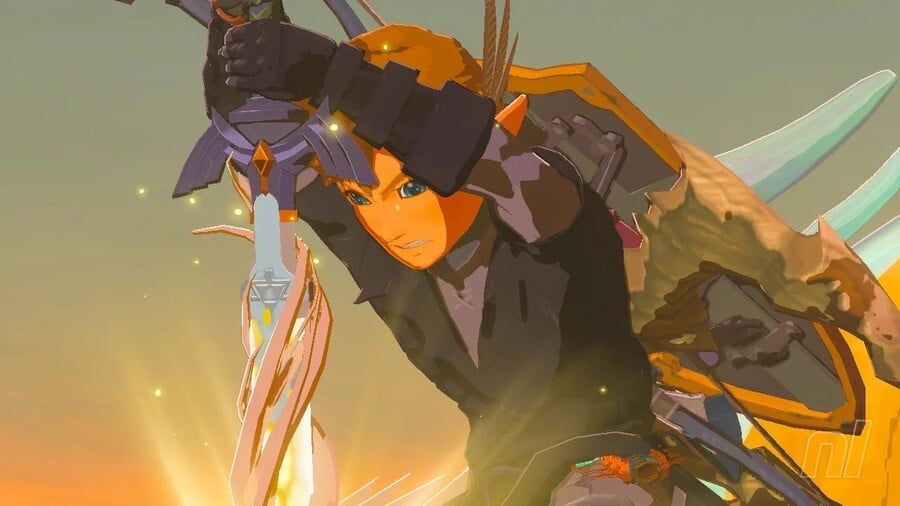Okay, so, if you've played through all (or most of) Tears of the Kingdom and have the Master Sword, then you know where it is — it's embedded in the head of the Light Dragon. And who is that Light Dragon? Well, it's none other than Zelda herself.
And Aonuma says that he and the team knew "very early on" that they wanted Zelda to turn into a dragon. The idea for the Master Sword being in her head came "probably immediately after that":
"So if you were to consider the whole development process, from one to 10, I'd say the dragon decision was probably somewhere between one and two. And the decision to have the Master Sword on the dragon's head was three to four, although we did know that the Master Sword should probably be on the dragon somewhere."
Fujibayashi continues by talking about the "great time paradox" as one of the central themes — early on in the game, Zelda is flung back to the distant past, of course — and the main thought from the team was "‘Okay, well how can we use the Master Sword with that theme as the background and get the Master Sword into Link's hands once he no longer has it?’". So the team landed on the "grand" dragon.
Some players, however, might not have gathered all of the Dragon's Tears or even know that Zelda is the Light Dragon. And that's because you can get the Master Sword whenever (as long as your stamina is high enough, anyway). And Fujibayashi admits that the team "spent a long time discussing" the open structure of the game and how this might affect the Master Sword's acquisition.
The way the team got around this was by concealing the dragon "a little bit" and making it "a little bit mysterious". The player would need to take many steps to accomplish everything and understand why the sword is there, but Fujibayashi tells IGN the following:
"But this is all tied to this idea that there's this certain sense of accomplishment and joy when you're working hard towards something and you unravel this deep mystery. We want the player to be able to enjoy that and for us to be able to enjoy that as well. So in that sense, I would say it's certainly a lot of work. It's certainly a lot of hard work, but it wasn't stressful..."
Aonuma agrees with Fujibayashi, and goes as far as to say that this is an aspect of modern open-world games — "the games of today are ones in which that can accept a player's own decisions and give them the freedom to flexibly proceed through the game". The series' producer also says that this kind of design philosophy can carry "additional development costs", likely because of how open then game has to be to allow that flexibility.
The interview gives us plenty of insights into Tears of the Kingdom, which won Best Action / Adventure Game at The Game Awards 2023 last week. This interview took place before TGA, but its win is a testament to the open nature and structure of the game.
